A few years ago, scientists believed only a tiny band of creatures could emit light. But a string of new discoveries has illuminated a wider world of glow-in-the-dark life forms.
Tasmanian devil
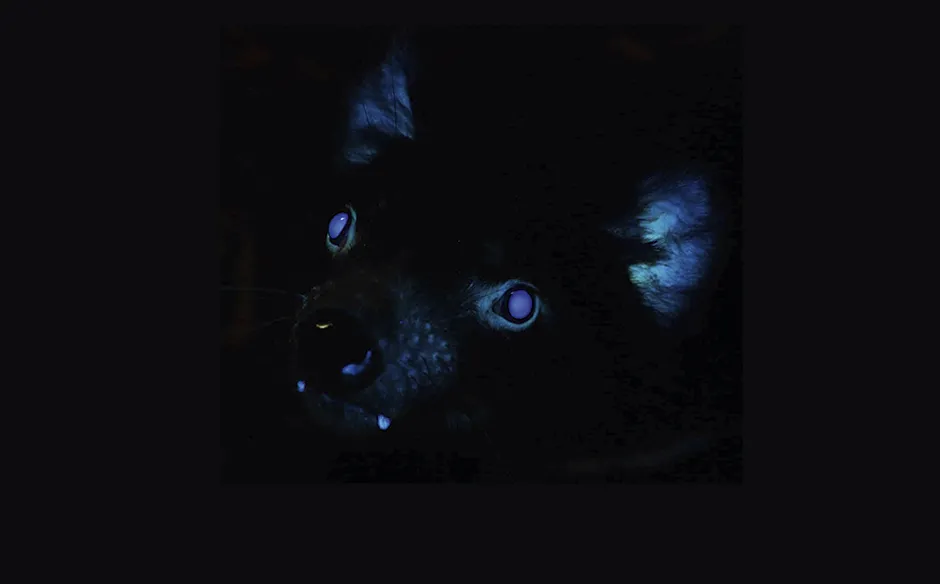
“It was pretty shocking when we saw it,” Jacob Schoen, a technician at an Ohio zoo told local reporters in December 2020, just before the global media circus descended. The source of this storm? This image, clearly showing that the Tasmanian devils housed in their enclosure were fluorescing after-hours – parts of their faces were, quite literally, glowing in the dark.
Certain Australian mammals, including Tasmanian devils, are thought to manage this via arrangements of special proteins in the skin and fur that absorb energy from sunlight during the day. At dusk, they re-emit this energy in a different wavelength – one invisible to humans without the use of blacklights or ultraviolet (UV) torches, which translate these hidden wavelengths into colours our eyes can process.
The big question zoologists are now asking is: why? What role does fluorescence play in animal communication? Week-by-week, month-by-month, other animal discoveries are lighting a path towards answers.
See more photo galleries of amazing animals:
- A partying caterpillar and a bridge made of ants: The winners of the National Insect Week Photo Competition
- That Monday morning feeling: The Comedy Wildlife Awards 2021
- 21 incredible pictures from the Bird Photographer of the Year 2021
Springhare
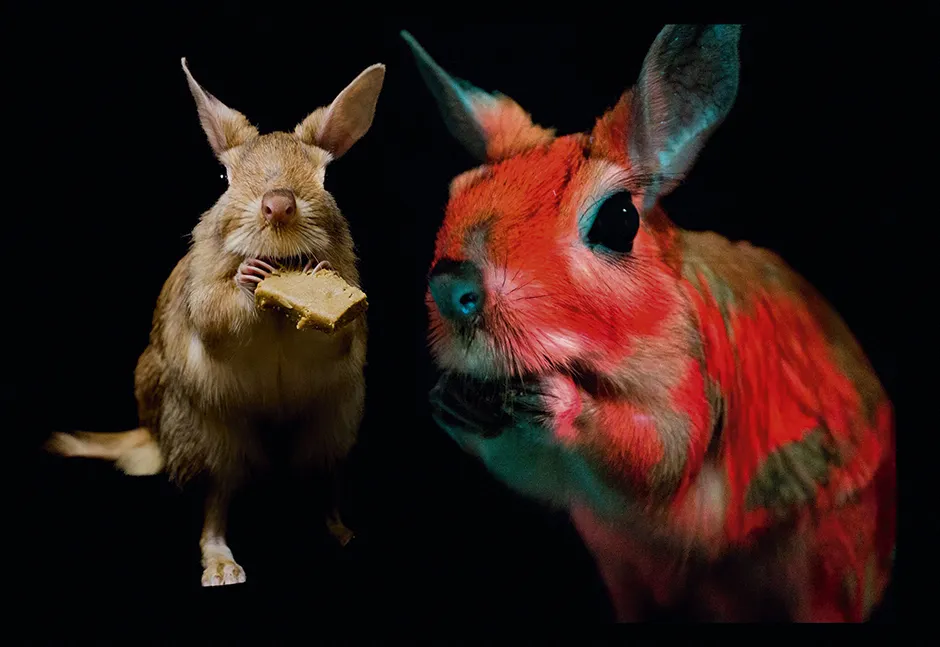
In February 2021, an African rodent called the springhare became one of the first non-Australian mammals known to fluoresce. A secret patchwork of luminous markings was discovered upon its flanks, each made up of organic compounds called porphyrins found in the fur.
Each individual (male or female) appeared to have its own unique patterns. This differs from marsupials such as echidnas, where fluorescence tends to occur in distinct regions of the body, such as the eyes, ears or nose.
Quite what purpose these blobs serve has become a hot topic among scientists. Some argue it may be a meaningless side effect as porphyrins break down at different speeds across the fur. Others argue that the patterns may help individual springhares recognise one another, or that the phenomenon is some form of cryptic camouflage – visual ‘noise’ to deter predators.
Fireflies
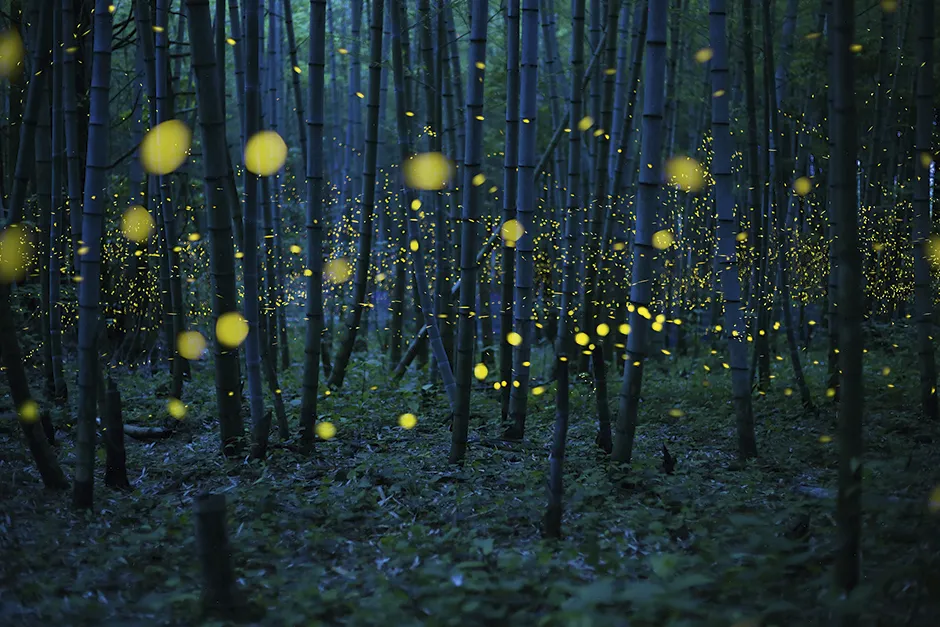
The firefly’s magnificent light show (captured here in Shikoku Island, Japan) is produced by a chemical reaction that occurs in the creature’s abdomen. A molecule called luciferin mixes with calcium and oxygen in the presence of an enzyme named luciferase, causing energy to be released in the form of light.
Some of the 2,000 or so firefly species (technically all beetles) pulse their glow. Some flash while looping through the air. Others coordinate their flashes with fireflies nearby.
The firefly’s ethereal glow once shone upon the faces of dinosaurs, yet as each decade passes in the modern age, their populations decline. The culprit? Streetlights, which some fireflies confuse for members of their own species during mating season.
“It’s one more threat on top of habitat destruction, the climate crisis and use of toxic pesticides,” says The Wildlife Trust’s Brian Eversham.
Gnat larvae
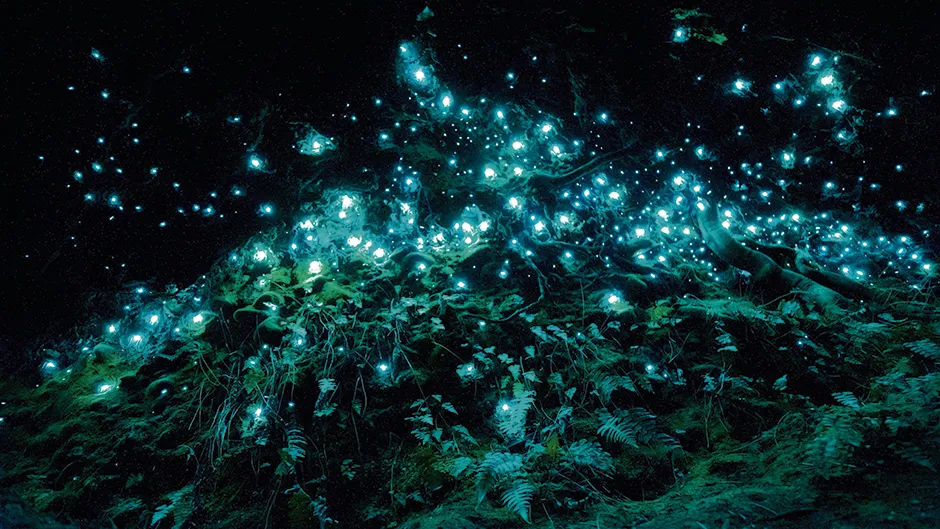
In a deep, dark passage, down a deep, dark cave, blue-green stars shine bright.
These constellations are made by the larvae of a tiny gnat (Arachnocampa luminosa) which produces a nest of sticky threads and then proceeds to glow, attracting flies which it catches and eats. This New Zealand-based fungus gnat is one of a handful of flies known to produce light.
Like fireflies, its bioluminescence depends on luciferins, yet a few crucial ingredients, identified in 2018, differ. It appears that by utilising different amino acids such as tyrosine, Arachnocampa luminosa has hit upon an independent means to generate light not used by any other animal on the planet.
“The fact that this bioluminescence is derived from a completely different chemical to other bioluminescent species just hints at how much the insects still have to reveal to us,” says Dr Erica McAlister, the Natural History Museum’s resident fly expert.
Anglerfish
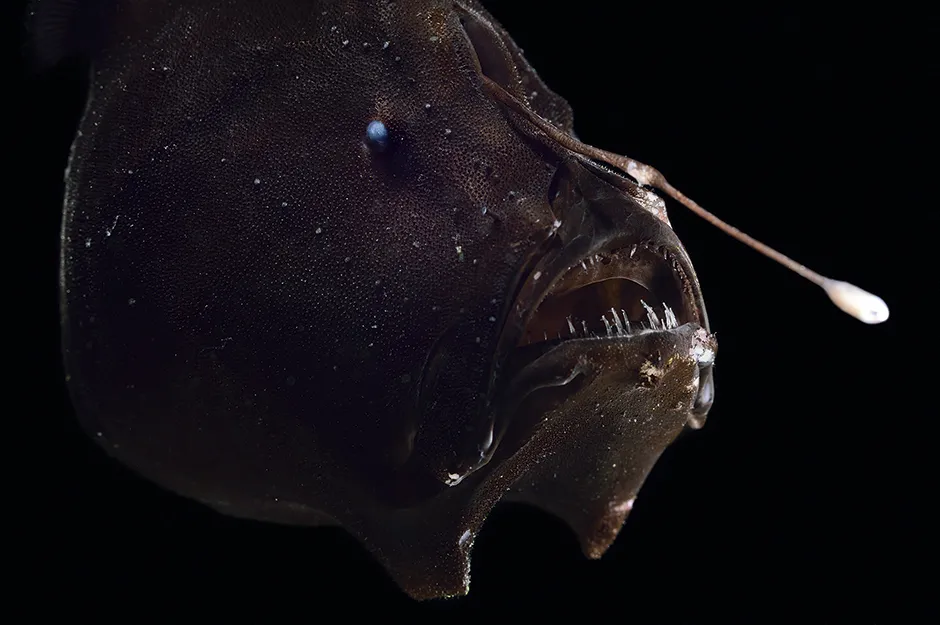
In the deep sea, where light from the Sun cannot reach, 90 per cent of ocean organisms are bioluminescent – they produce light through the mixing of reactive chemical agents or through light-producing bacteria.
Among the most famous bioluminescent animals are the anglerfish, who cultivate special light-producing bacteria called Photobacterium in a pouch on their dorsal fin. The ghostly glow that these bacteria produce attracts the attention of small fish, who unwittingly stray into the range of the anglerfish’s giant maw.
One of the great mysteries of the deep is where anglerfish get their light-producing bacteria from. Young anglerfish appear not to carry them; neither do males (who are so tiny and inconsequential, scientists overlooked them for years). It may be that anglerfish collect Photobacterium from the water, offering the bacteria food and shelter in return for luminary services.
Kitefin shark
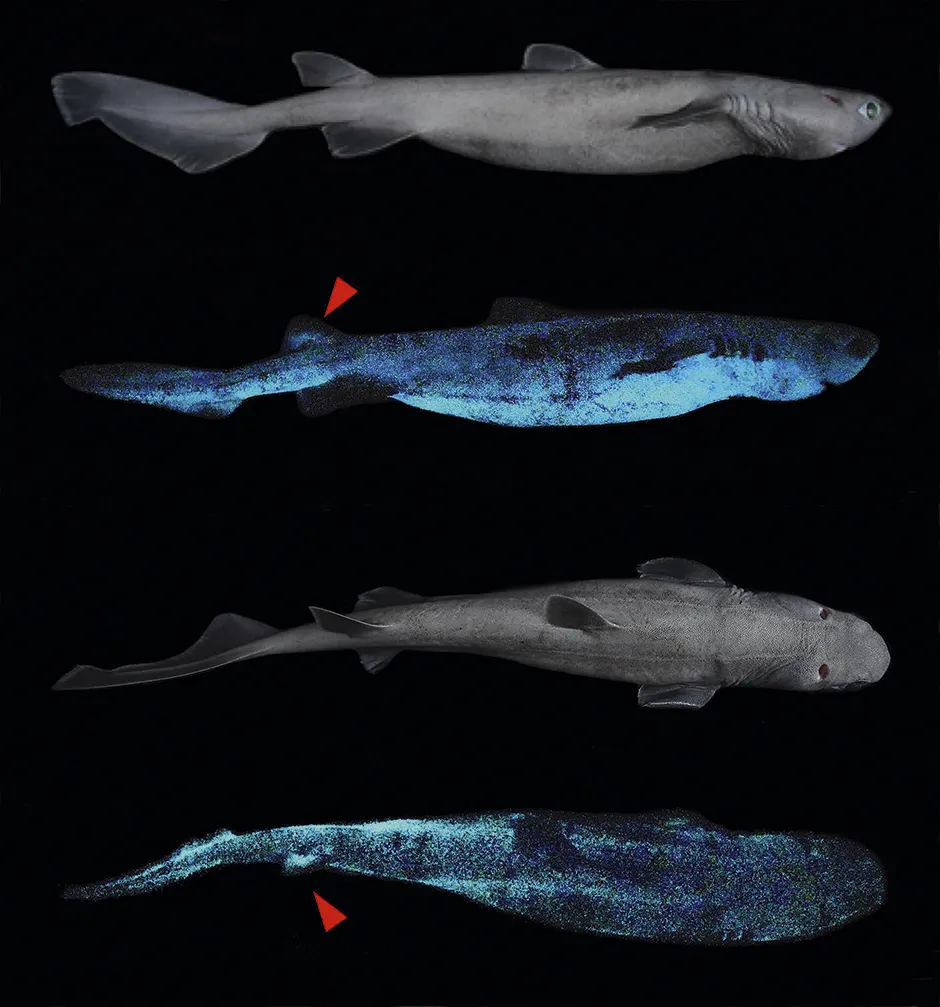
“This isn’t a small shark trying to blend in with the dim, inky light of the twilight zone to avoid getting eaten, but a big predator that maybe even illuminates the seabed to hunt down prey,” says Dr Helen Scales, marine biologist and author of The Brilliant Abyss.
She is referring to the discovery in March 2021 that a species of shark called the kitefin is able to glow. At 180cm long, it is the largest bioluminescent vertebrate that has ever been discovered.
Many species of deep-water sharks have bioluminescent undersides which, when viewed from deeper in the water by predators, makes the silhouette of the shark disappear against the backdrop of well-lit waters above. The kitefin also has a bioluminescent underside, but far more surprising is its bioluminescent dorsal (upper) fin – an adaptation whose purpose currently remains the subject of intense debate.
The ocean’s so-called ‘twilight zone’ is located between 200m and 1,000m deep, and is both the biggest and least explored habitat on Earth.
Flying squirrel
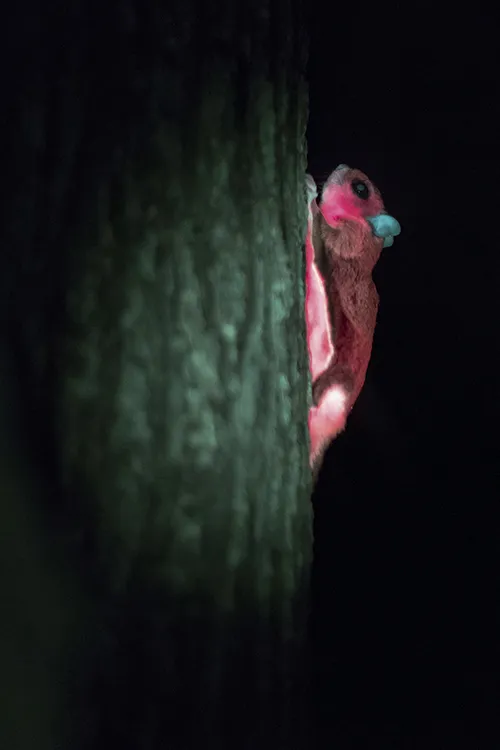
Of all the animals that visit birdfeeders, a gliding mammal that glows electro-pink would be a rare treat. Yet that is exactly what Wisconsin-based biologist John Martin saw one night when he shone his UV torch towards an unknown noise. Staring right back at him, with its mouth full of birdseed, was a fluorescing flying squirrel.
Curious about whether this was a quirk of all flying squirrels, Martin and his colleagues searched for more mammals nearby and asked museum curators to check their stuffed collections using UV flashlights. To their amazement, each of the nocturnal species had the same psychedelic patterns upon the flaps they use to glide. The species active during the daytime did not.
“So far, the link between biofluorescence and a nocturnal lifestyle has held as new observations come in,” says biologist Prof Paula Anich, who worked on the study with Martin. “Beyond that, we’re not really sure. Camouflage? Or a by-product of metabolic processes that coincidentally fluoresces?”
- This article first appeared inissue 363ofBBC Science Focus Magazine–find out how to subscribe here
See more galleries of science photography: